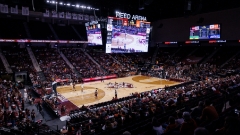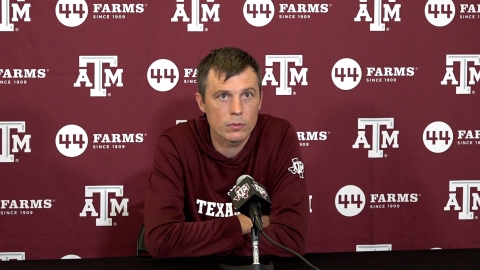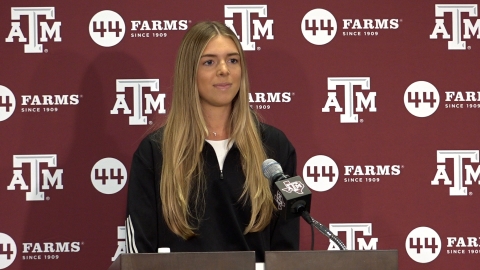Alberts aims for financial plan that will allow all programs to succeed

DESTIN, Fla. — An adage suggests spending money is necessary for making money.
The phrase was probably coined by a shrewd investor. But it has often been repeated, though not verbatim, by college athletics administrators.
Money is needed. It’s needed to fund multi-million dollar salaries for coaches. It’s needed to construct palatial facilities. It’s needed to feed and house hundreds of athletes. Now, it’s needed to pay those athletes, too.
In order to raise all the money required, generous donations are sought from alumni. Media rights are sold. Ticket prices are raised.
Athletic departments rely on revenue-producing sports to cover the cost of all the others. In most cases, “revenue-producing sports” translates to football and men’s basketball.
Alas, that’s not the case at Texas A&M.
Earlier this week at the Southeastern Conference spring meetings, A&M Director of Athletics Trev Alberts stated the goal was to field championship-level teams in all sports. He also acknowledged football as the only A&M program that’s in the black.
“Our objective and goal is (for) every single one of our programs (to succeed),” Alberts said. “Obviously, we start with football. It’s the only revenue generator that we have at Texas A&M.
“But we are sitting down and looking at every single one of our programs and saying, ‘Today, A: We’re going to keep all our programs. B: We’re going to create a financial strategy that every one of our programs can win at the highest level through resources.’
“It doesn’t guarantee you’re going to win, but we’re going to fund them in a way that they can be successful.”
Notice, Alberts said “today.”
A&M plans to fully fund scholarships for every sport. That should be applauded.
Of course, that will also increase the amount of money the athletic department needs to fund those scholarships and all that goes with them.
If money gets tight, the future of some programs could be in jeopardy. No one wants to see a sport dropped because of economics.
To avoid that possibility, new revenue streams are sought. Naming rights to stadiums are an option. So are corporate sponsors.
But if you’re not ready for Yeti Stadium at Kyle Field or the Buc-ee’s logo on A&M jerseys, then other sources might be needed.
An obvious potential source for A&M would be turning a profit in men’s basketball.
However, making that money will likely require spending money.
That is spending whatever is necessary to renovate Reed Arena with increased floor seating and suites. Or maybe even building a new arena.
That’s what Texas did. Three years ago, the Longhorns moved from the old Erwin Center and into the multi-purpose 16,000-seat Moody Center.

Texas Athletic Director Chris Del Conte said on Wednesday that has been the difference in getting Longhorn basketball into the black.
“The new Moody has been significant for us,” he said. “At Erwin, it was touch-and-go. The new Moody … it’s been phenomenal for us. You have more clubs, more spaces.
“It’s phenomenal when you go in there. When you walk into that joint and all the things that you have with it…special.”
As it stands, Reed Arena is certainly functional. It isn’t special, though.
Funding a renovation won’t be easy. First of all, A&M is still paying Jimbo Fisher about $60 million not to coach. Secondly, men’s basketball is the third most popular sport at A&M. Thirdly, $80 million has already been approved for improvements to Blue Bell Park — A&M’s baseball stadium.
Why can’t a renovated Blue Bell Park make baseball the second revenue-producing sport, you ask?
The simple answer: TV deals aren’t sufficiently lucrative enough to keep baseball out of the red.
Men’s basketball is probably the only option to be a second revenue-producing sport at A&M.
But is A&M willing to spend the money that’s needed for basketball to make money?





